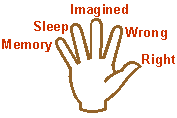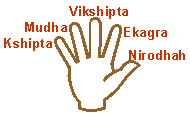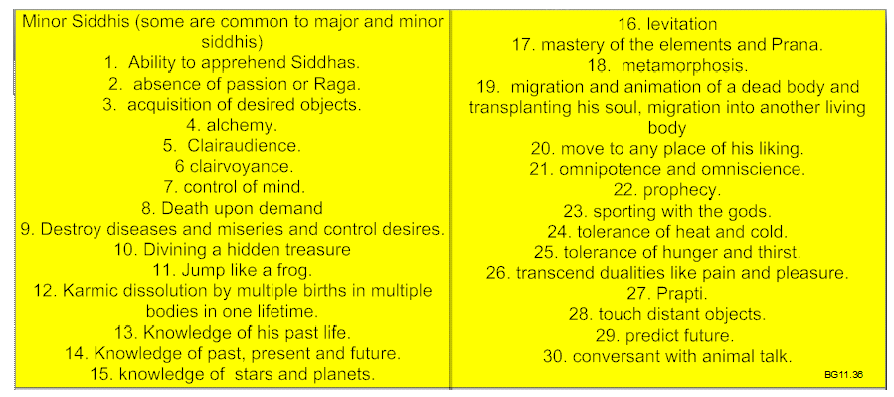Not at this time and likely not in the near future, will any type of national or international certification program for yoga teachers exist (*see note below for clarification). This is due to the traditional nature of Yoga instruction. Since antiquity, Yoga has been transmitted from teacher to student on a one-to-one basis. Comparatively recently, and mainly in the West, Yoga has begun to be offered to groups of students in a class format. The more advanced practices of Yoga are still the best when undertaken on a one-to-one basis, and only if you are fortunate enough to find a competent teacher who is willing to instruct you.
Any serious student seeking qualified instruction should avoid any Yoga teacher who views this science as a hobby or someone who reads a few books, takes a couple introductory Yoga courses and then decides to become a Yoga teacher. This can only work if they have spent sufficient time under the constant supervision of their own personal Yoga teacher. This relationship between teacher and student needs to be taken very seriously by both parties and can never be entered into lightly.
There are competent teachers available, but you may just have to search them out. When seeking a competent, qualified Yoga teacher there are certain minimum requirements to look for that they should demand of you as their student. Seven of the most basic ones follow:
1. Daily practice of Yoga asana (postures), breathing, and meditation. To make progress in Yoga a serious commitment to daily practice is necessary. Only when a teacher has this support will they be able to build the solid foundation of experience that is required before they can show others how to achieve that experience. This daily practice is also needed in order to maintain the strength and health necessary for the extraordinary demands of both teaching and learning.
2. Regular and frequent contact with a teacher is necessary simply because it’s impossible for a teacher to work effectively in a vacuum, and no one becomes so advanced in their practice that they do not need the guidance and support of their own teacher.
3. Study of the important Yoga texts; this is one of the five observances that are part of the essential eight "limbs" of Yoga practice (see #4, below). A teacher needs to have an intensive background of study that includes Patanjali’s Yoga Sutras, the Hatha Yoga Pradipika, the Bhagavad Gita, and other world philosophies that the student must be willing to learn.
4. The practice of ethical behavior which includes the five yamas (meaning "restraints"):
- Nonviolence
- Truthfulness
- Nonstealing
- Periods of celibacy
- Nonhoarding
…and the five niyamas (meaning "observances"):
- Purity
- Contentment
- Tolerance
- Study
- Remembrance
The yamas and the niyamas are the first two limbs in Patanjali’s system of classical Yoga (called "Ashtanga Yoga"). The remaining six limbs are:
- Physical exercises (asana)
- Breathing techniques (pranayama)
- Withdrawal of the mind from the senses (pratyahara)
- Concentration (dharana)
- Meditation (dhyana)
- Absorption, or ultimate union with the self (samadhi)
*Note: These eight limbs must be developed simultaneously. The ethical guidelines of the yamas and niyamas are a part of Yoga practice not simply for moralistic reasons but because they support and protect the student during the unfolding of personal experience in meditation. A teacher needs this support and protection for the same reasons as well as to help reduce the interference of personal ego in the teaching process. An ethical Yoga teacher conducts classes in a responsible, safe, and aware manner. They will never organize classes that are too large for each student to receive individual attention. They will never push students beyond their limitations. And of grave importance, sexual involvement with students is absolutely prohibited.
5. A healthy vegetarian or vegan (plant-based) diet. Although you do not need to be a vegetarian/vegan to practice Yoga, a Yoga teacher must conform to different and stricter standards. Someone who is taking responsibility for teaching others how to use Yoga meditation techniques must have developed the steadiness and nonviolent attitude that can only be attained through a vegetarian or vegan diet. It goes without saying that a teacher should not smoke or use drugs (other than prescription medication) or misuse alcohol.
6. Training in basic anatomy and the effects of Yoga techniques is very important. A teacher must be able to vary certain techniques according to each student’s ability and know how to coach and advise students with common medical conditions such as hypertension, arthritis, back problems and other disorders. A teacher should also be able to recognize when a student needs professional psychological counseling plus be familiar with community services that are available to help the student.
7. The teacher must have the ability to separate Yoga from religion and to teach their students the same. Yoga is not a religion; it predates Hinduism, as well as all known religious practices, and its techniques have been used throughout the world since before recorded history. Yoga is a systematic science of nonreligious, transcultural techniques which can help the practitioner to develop greater self-knowledge and awareness. The texts of Yoga are not scriptures but rather handbooks (or guidelines) of how to use the techniques safely and what kinds of experiences may possibly be expected.
Hopefully, this article will give you some idea of the qualifications that are generally accepted as important. Get a good solid base in your own practices while under the direction of a qualified teacher, read and study about Yoga practice and philosophy, and build strength, awareness, and health, including the adaption of a vegetarian or vegan diet. If you then would like to advance and become a teacher, remember, teaching is hard work, and if you try to do it without being in top condition physically and mentally, you will do a disservice both to yourself and your students.
*Note on certification: There's a difference between credentialing and certification and although certification has not yet achieved national/international recognition, Rae Indigo runs a highly credited certification school, recognized by the Yoga Alliance among others. Rae teaches 200 & 300 hour Yoga Certification. The focus of her trainings is teaching students to heal using yoga, and to create sequences that are effective for the group or individual being guided.
Rae Indigo is ERYT 500
 Who doesn’t sometimes feel like they’re up one day and down the next; whether it’s trying to keep your personal and family life on an even keel, dealing with financial issues in a tough economy or even dealing with the current social/political climate, it often seems like we’re on a wild ride. All of us experience challenges and develop all sorts of worries and concerns in the course of our lives, and in today’s hectic world it may feel like it takes the strength of Hercules to navigate the complexities of our technologically-advanced, humanistic and existentially-struggling culture.
Who doesn’t sometimes feel like they’re up one day and down the next; whether it’s trying to keep your personal and family life on an even keel, dealing with financial issues in a tough economy or even dealing with the current social/political climate, it often seems like we’re on a wild ride. All of us experience challenges and develop all sorts of worries and concerns in the course of our lives, and in today’s hectic world it may feel like it takes the strength of Hercules to navigate the complexities of our technologically-advanced, humanistic and existentially-struggling culture.


 Practice (abhyasa) and non-attachment (vairagya) are the two foundational principles on which the entire system of Yoga rests. Through the cultivation of these two principles, all other Yoga practices evolve and eventually mastery over the mind field (chitta) occurs, and allows the realization of the true Self (Atman).
Practice (abhyasa) and non-attachment (vairagya) are the two foundational principles on which the entire system of Yoga rests. Through the cultivation of these two principles, all other Yoga practices evolve and eventually mastery over the mind field (chitta) occurs, and allows the realization of the true Self (Atman).

